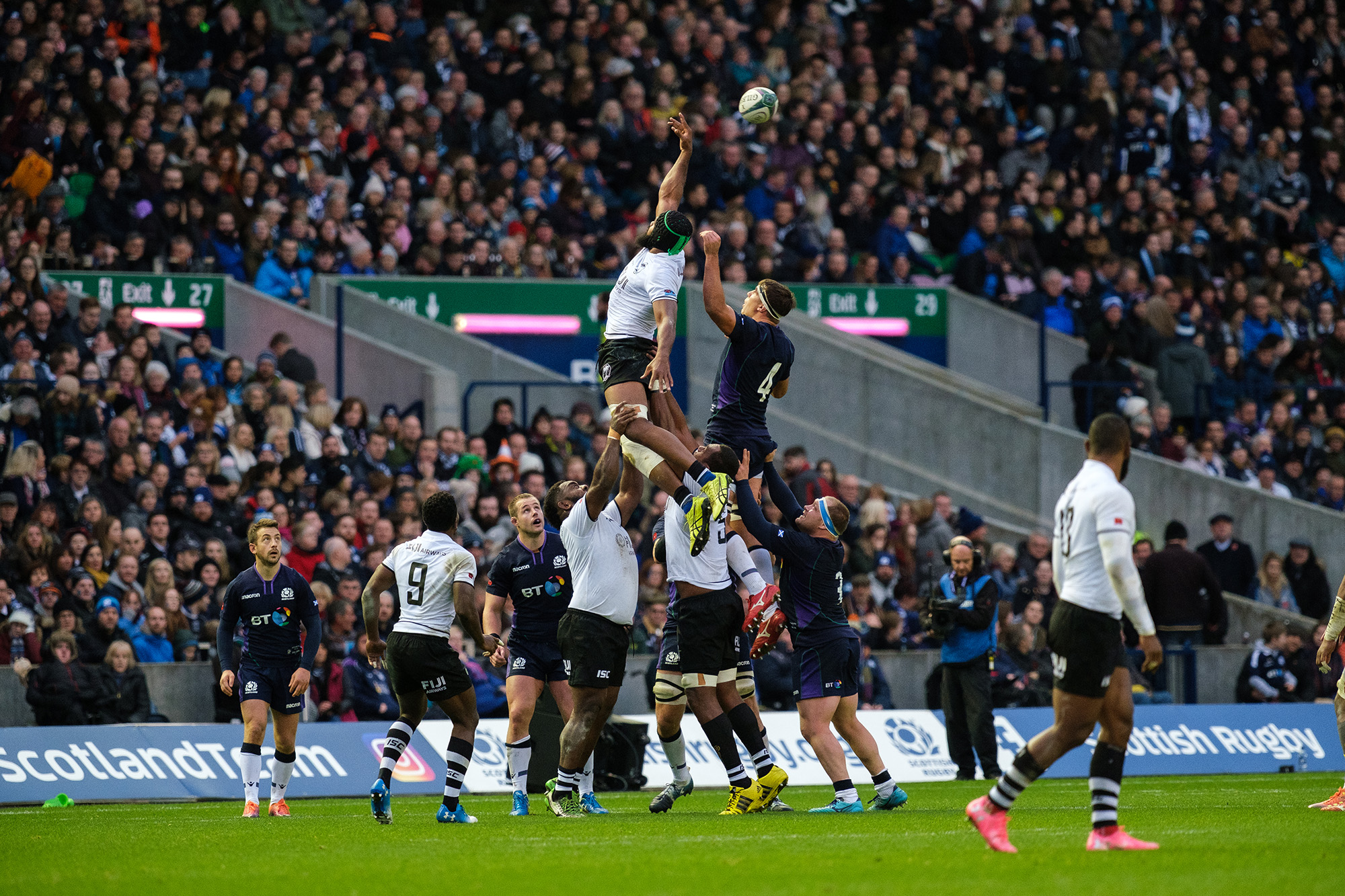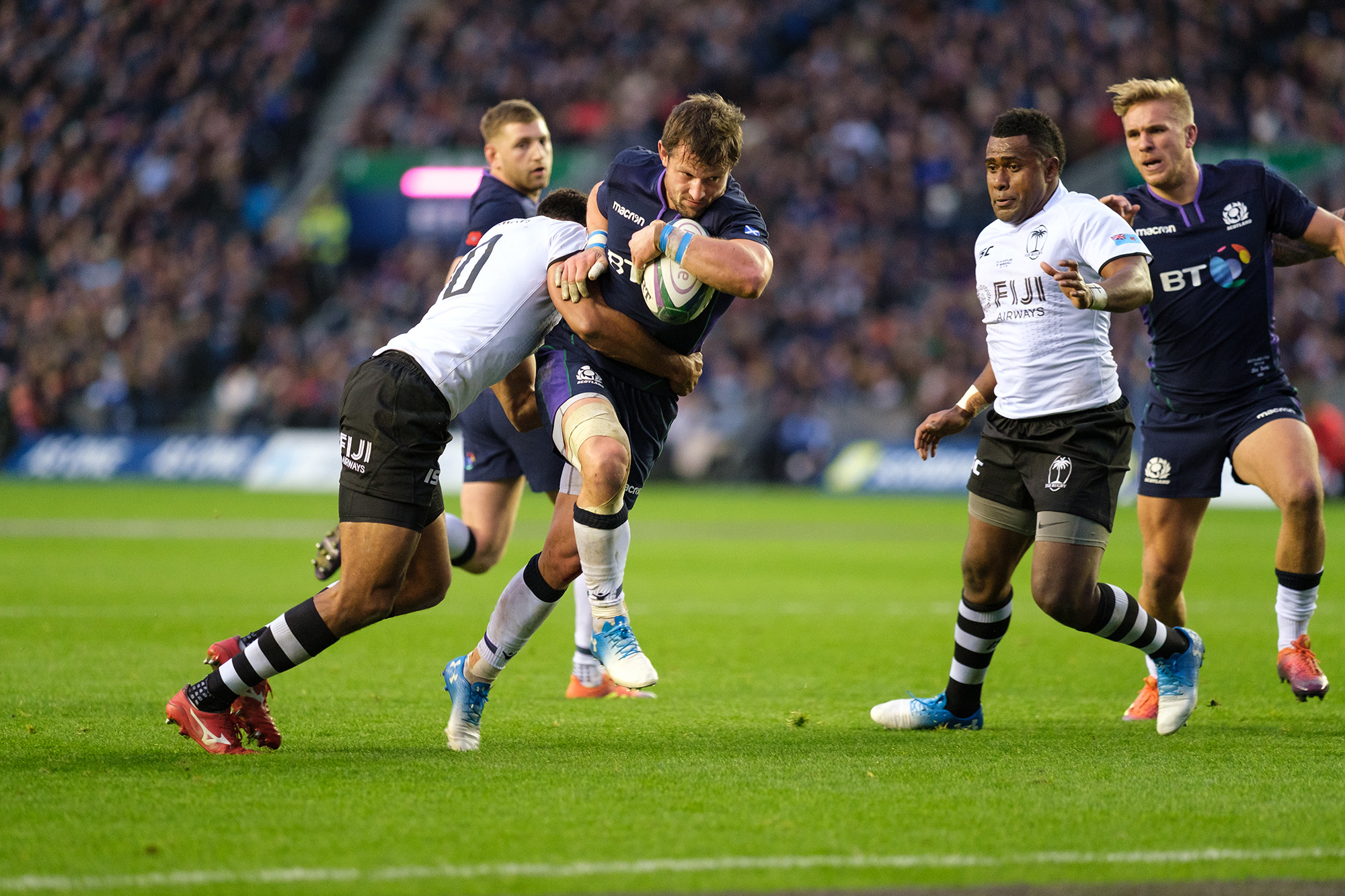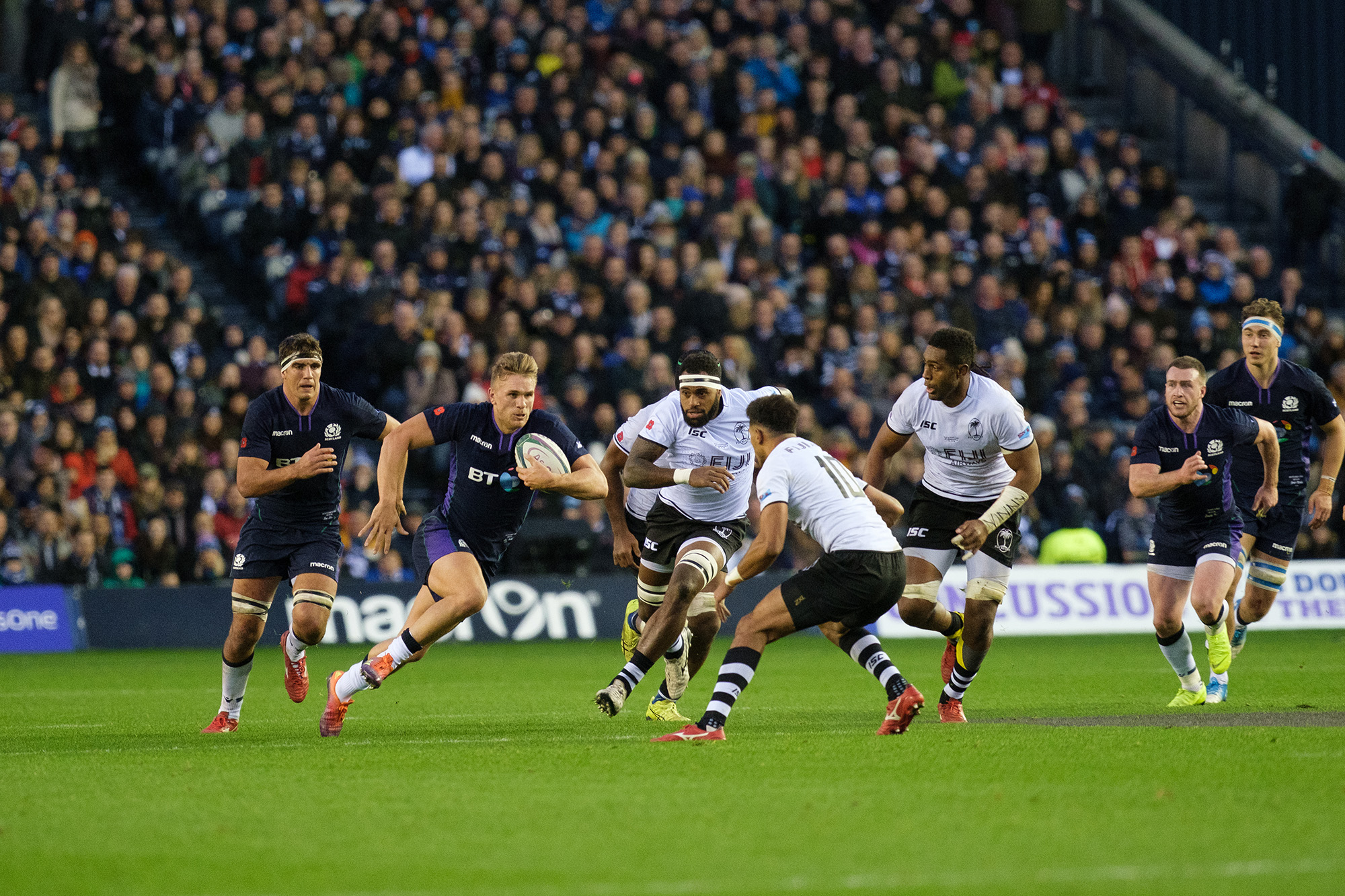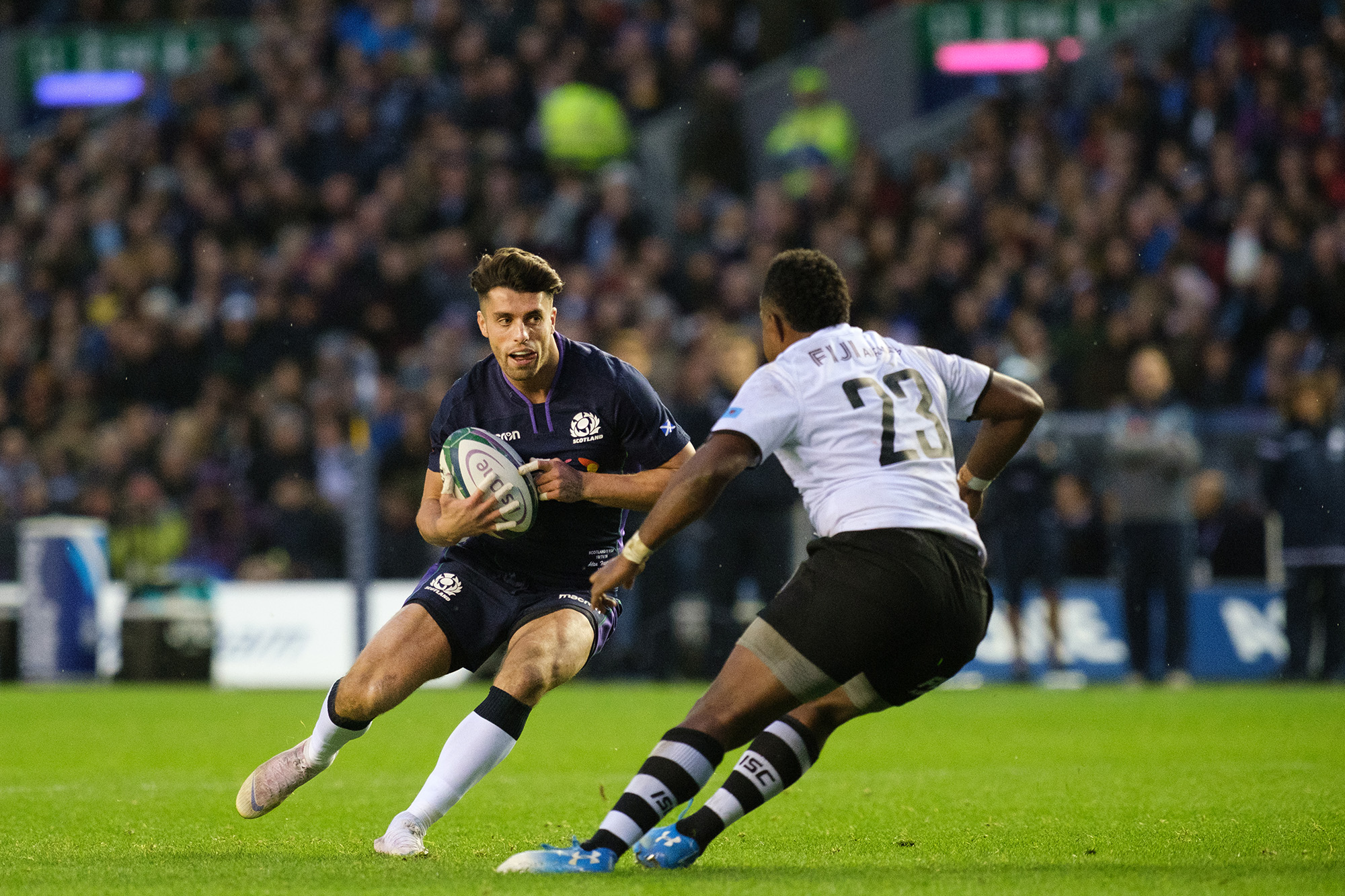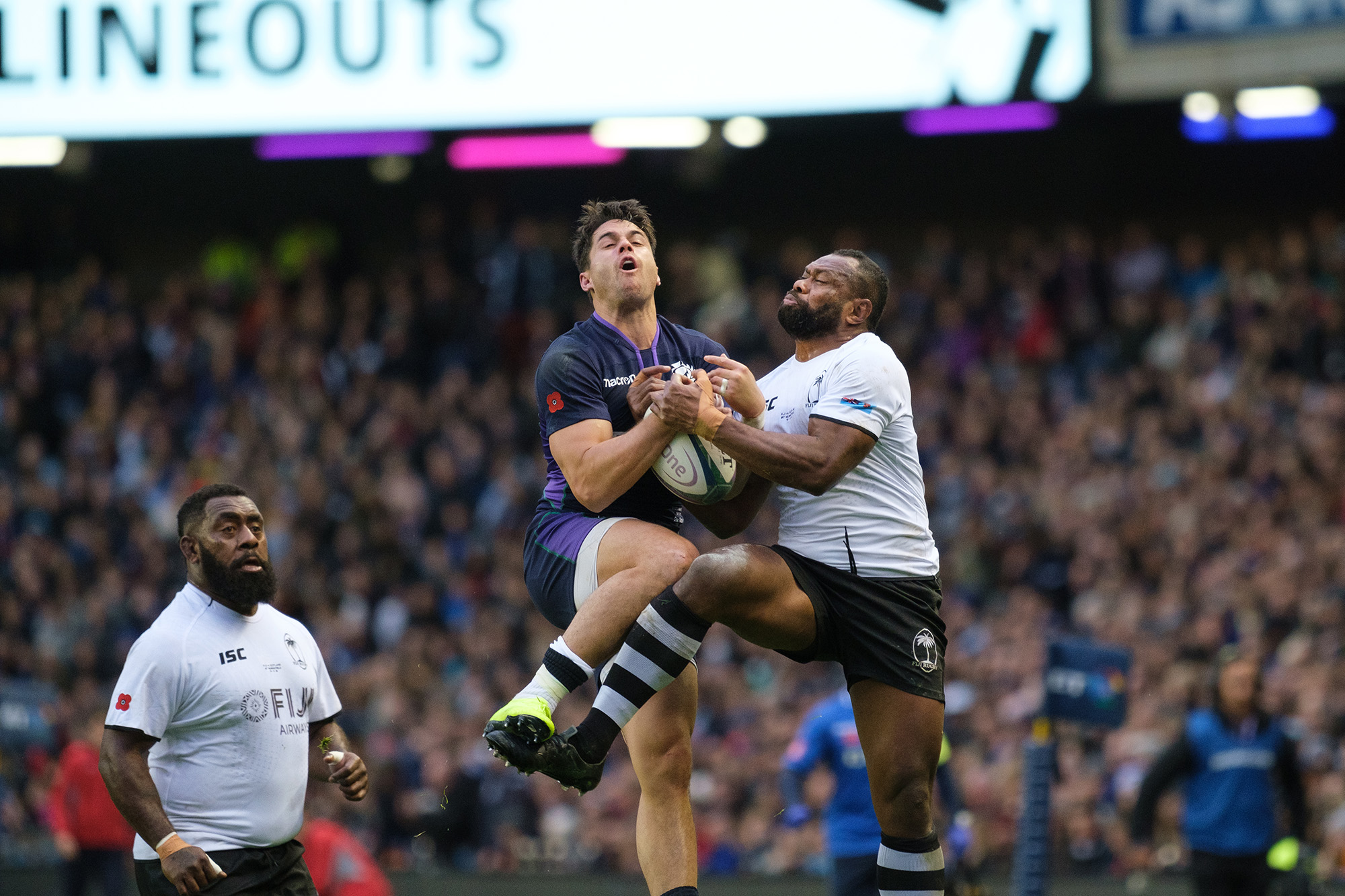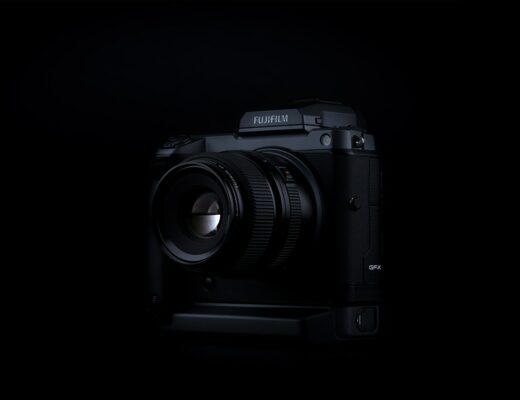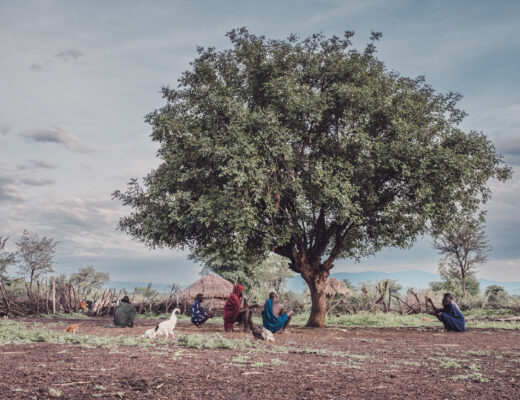Regular readers of the FujilLove blog will know that I have been using the new Fujifilm X-T3 and XF200mmF2 during rounds of the FIA World Endurance Championship and this weekend I head to China for Round 5 of the championship in Shanghai. So far I have been really impressed with both the camera, which is a step up from the excellent X-T2 in every department, and the superb XF200mmF2, which has swiftly become my favourite Fujinon prime lens.
Last Saturday I was at Murrayfield in Edinburgh for the first Autumn Rugby International encounter between Scotland and Fiji. I have shot several of Scotland’s games over the past few years using an X-T2 and the XF100-400mmF4.5-5.6 and I was eager to use the new fast telephoto prime with the newest flagship X Series camera under the floodlights.
Team sports are very different to shoot from motorsport, where the cars are fairly easy to predict where they will be on the track, unlike players that switch directions quickly, and run between you and the subject you are tracking.
Also, apart from the 24 Hours of Le Mans, the action takes place in daylight on an open track, so the lighting is usually pretty good. This cannot be said for a stadium like Murrayfield, however.
The light from the stadium floodlights is pretty poor in comparison to a race track and with the 100-400mm zoom with its maximum f/5.6 aperture, I was shooting at 6400 iso and higher to maintain a shutter speed of 1/800, which is barely fast enough to freeze the action.
So the f/2, or f/2.8 with the 1.4x converter fitted, maximum aperture was going to give me an advantage over the slower zoom, allowing me to increase the shutter speed to a more acceptable level, and also drop the ISO down a notch or two.
Testing the electronic shutter
During the team warm up session, I tested the electronic shutter on the X-T3 to see what the results would be like at 20fps and 30fps. The first set was players passing the ball and the second set was Scotland’s Full-Back Stuart Hogg practicing kicking the ball (see images below).
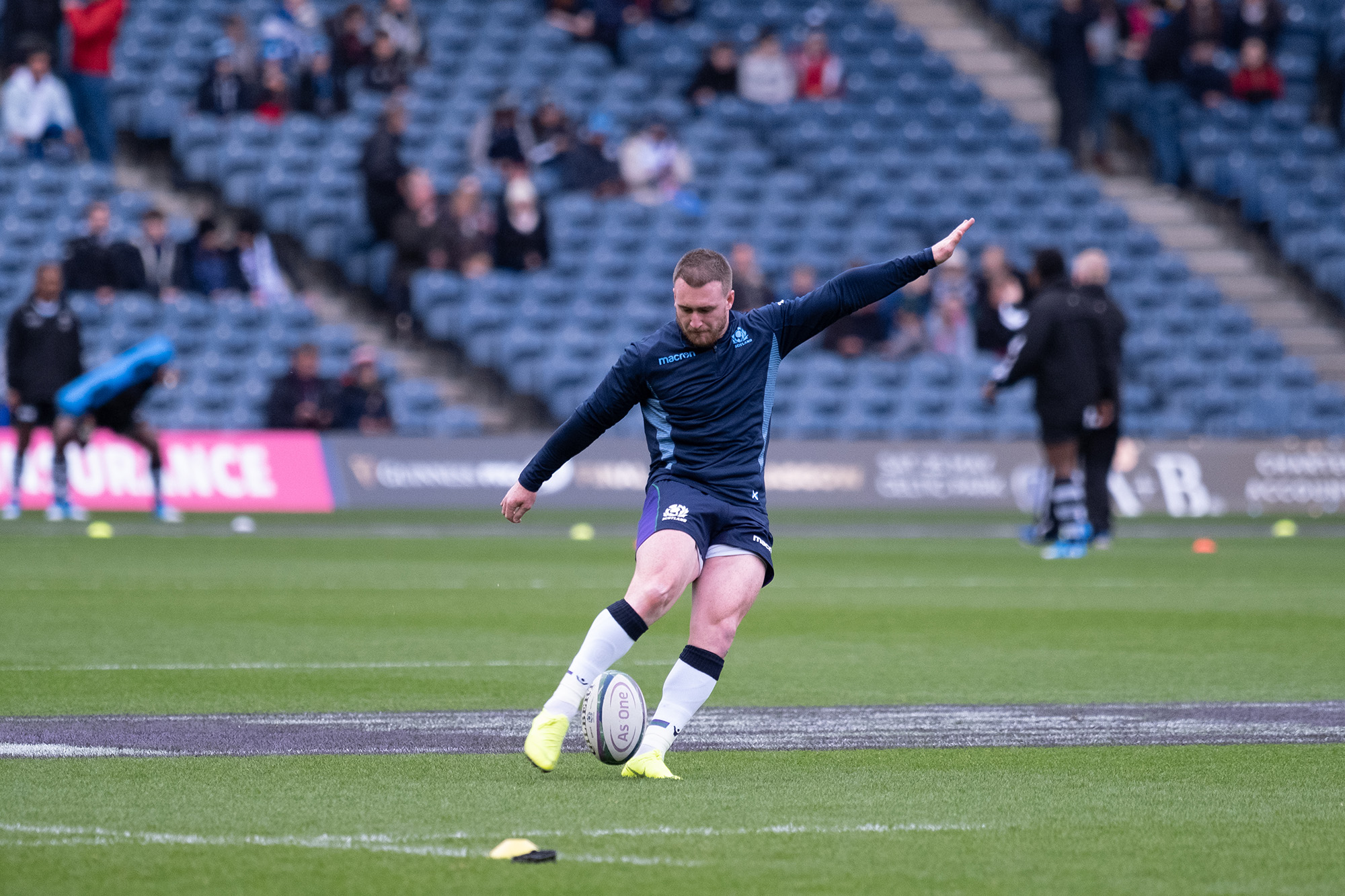
Testing the Electronic Shutter on the X-T3 – 30fps @ 1.25x crop – X-T3 + XF200mmF2 + 1.4x – 1/1250 @ f2.8 ISO1600
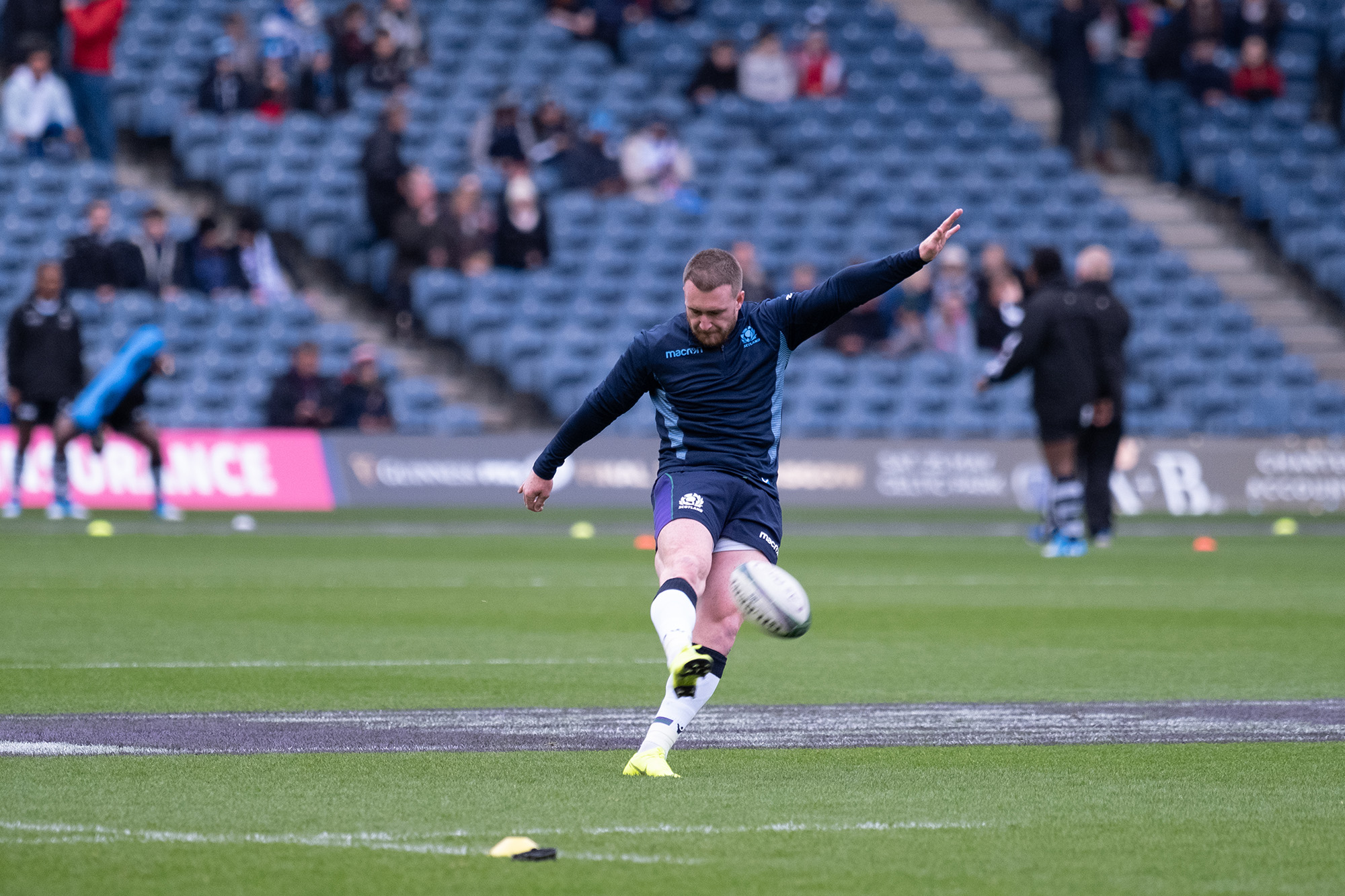
Testing the Electronic Shutter on the X-T3 – 30fps @ 1.25x crop – X-T3 + XF200mmF2 + 1.4x – 1/1250 @ f2.8 ISO1600
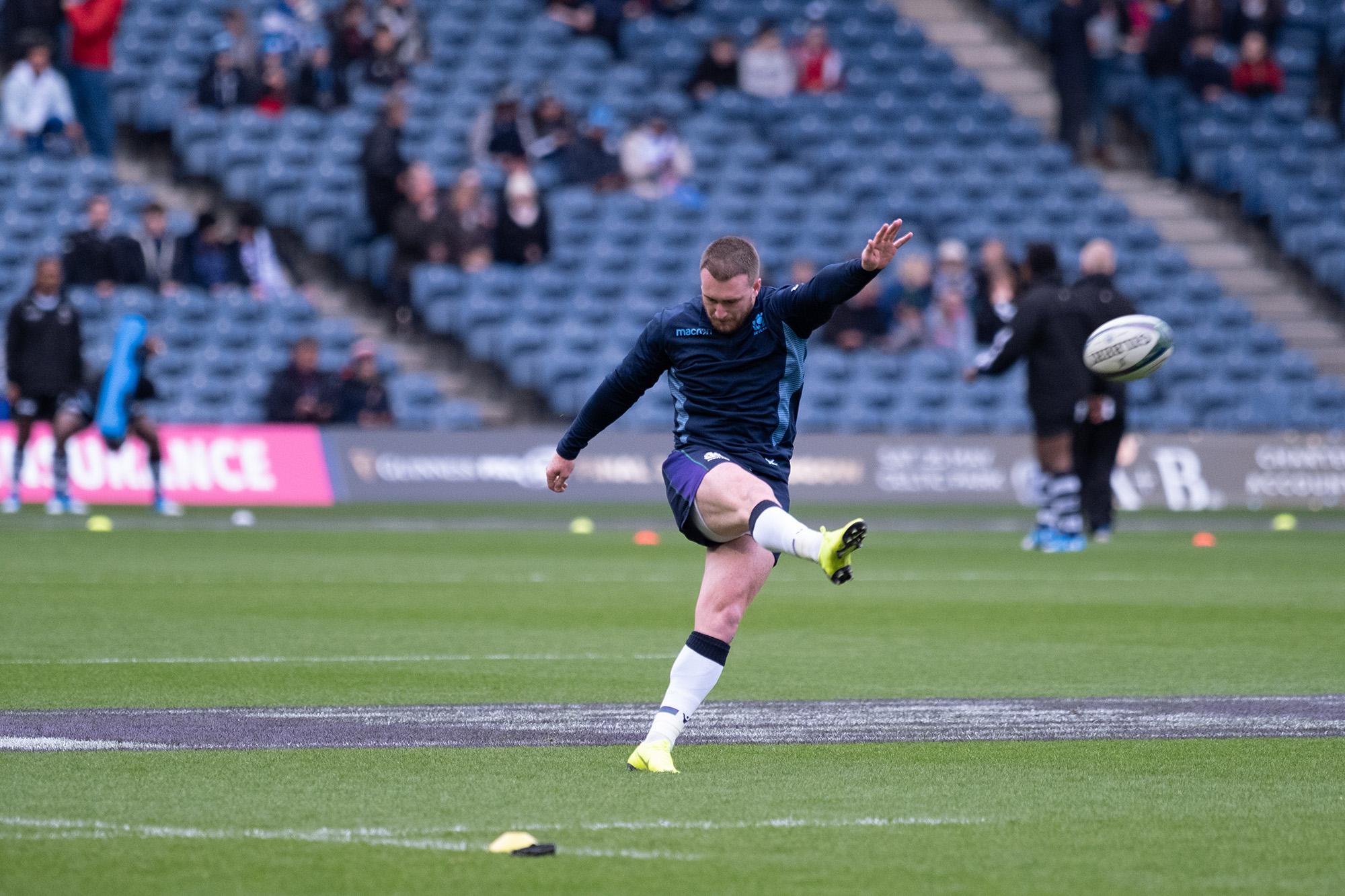
Testing the Electronic Shutter on the X-T3 – 30fps @ 1.25x crop – X-T3 + XF200mmF2 + 1.4x – 1/1250 @ f2.8 ISO1600
The electronic shutter on the X-T2 would sometimes gives results with players leaning or the moving ball would be elongated. The electronic shutter on the X-T3 is certainly a massive improvement over the older camera, with only some of images during the kicking session where the ball was slightly distorted. However, I elected to stick to mechanical shutter during the game as I didn’t really need 20 or even 30 frames per second and I couldn’t chance a vital shot being unusable due to distortion.
Just before kick-off I settled down behind the touchline with Scotland playing towards my position.
Two cameras/two lenses
I elected to fitted the XF200mmF2 with the 1.4x converter to give me a 280mmF2.8, or 420mmF2.8 in full-frame terms. My second X-T3 was fitted with the XF50-140mmF2.8 zoom in case I had to swap over quickly if the play came too close to my position.
This is another difference between shooting with the XF100-400mm zoom compared to the 200mm prime. The prime has the advantage of the faster aperture but the zoom has the flexibility of being able to pull back on the focal length when the play comes in close.
A few times I quickly removed the 1.4x converter from the prime when the set plays got closer to the touch line, also allowing me to shoot at f/2, so reducing the ISO down one stop to compensate.
Camera settings
I set both X-T3s to continuous AF, with set 2 (ignore obstacles) selected in the AF Custom settings menu. I used single point AF on the camera with the XF200mm fitted and zone (3×3) focus on the camera with the 50-140mm fitted. I used zone on the second camera because if I needed to grab it quickly during the game, I had more chance to get the focus point on target with zone than with single point.
As I said earlier, I used the mechanical shutter with the drive set to 11 frames per second. The switch on the grip was set to ‘boost’ to improve the performance of the camera.
I always shoot RAW + JPEG, with the JPEG film simulation set to standard (Provia), with the RAWs going to card 1 and JPEGs going to card 2.
I used my standard method for shooting and that was manual exposure. I set 1/1000 using the back dial, I set the lens aperture to wide open and altered the ISO on the front dial. The lighting at Murrayfield is half a stop darker at the edges of the pitch compared to the centre, so I had to watch where the play was and adjust the ISO accordingly to get the correct exposure.
That is the beauty of the X Series Electronic View Finder (EVF) – it shows you exactly what the exposure is before you press the shutter release.
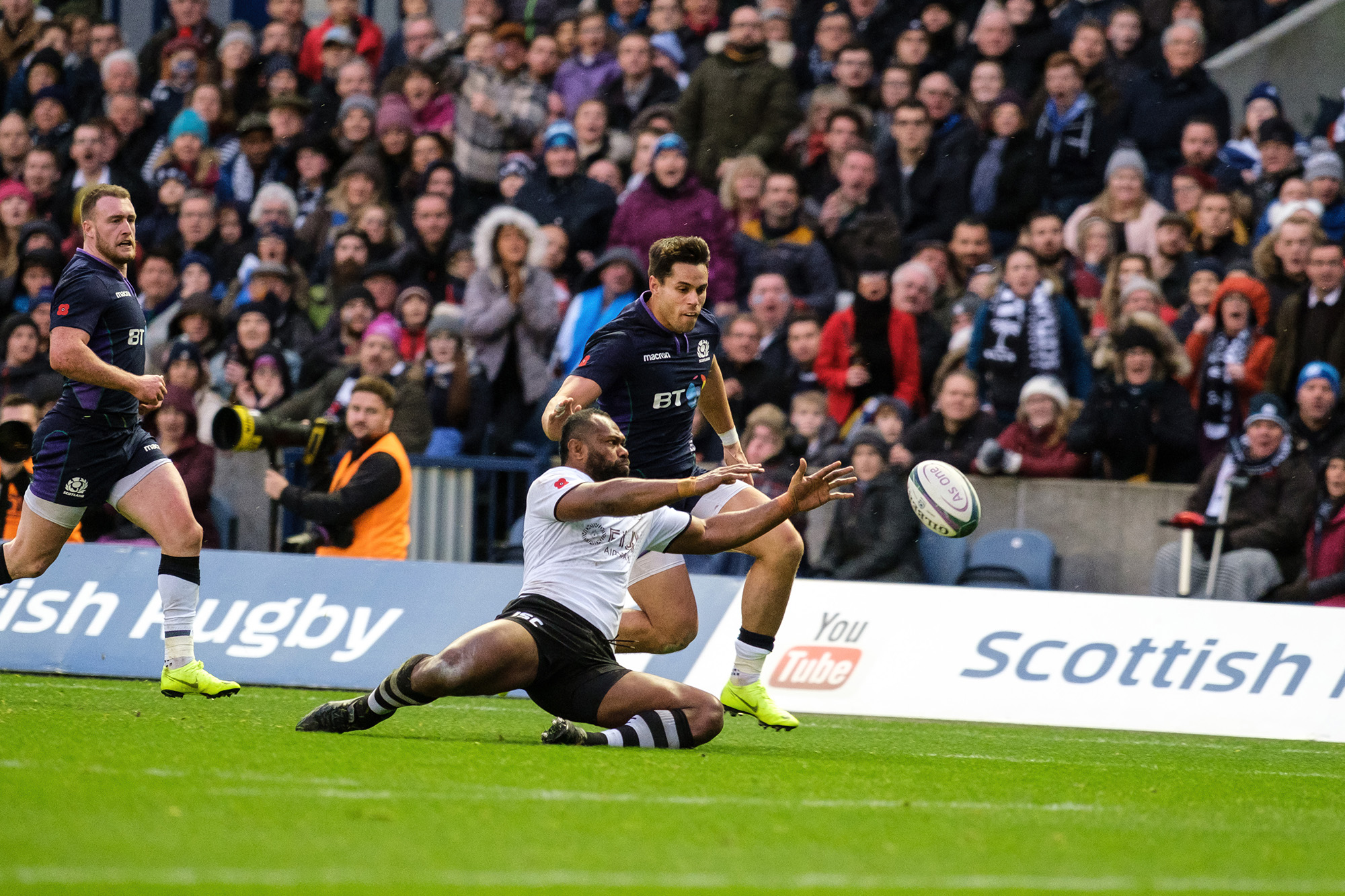
Scotland wing Sean Maitland challenging for the ball – X-T3 + XF200mmF2 + 1.4x – 1/1000 @ f2.8 ISO4000
Following the play
Once the game had started, the play ebbed and flowed from one end to the other but Scotland soon started to get the upper hand. The AF on the X-T3/XF200mmF2 is lightning fast and by selecting ‘Ignore Obstacle’ in the AF Custom Menu, the AF stays locked on to the player with ball even if another player or official gets in the way.
The standard lens for any sports photographer is a 400mmF2.8 on a full-frame camera. The XF200mmF2 with the matched 1.4x teleconverter fitted gives the X Series a 280mmF2.8 or 420mmF2.8 with the crop factor added. Now the depth of field is not going to be as shallow as a full-frame camera but, to be honest, the subject separation from the background in the images I have used in this article is great.
To be honest, I defy anyone to notice a massive difference in DoF between an image shot on a Canon 1DX MK2 and 400mmF2.8, and a Fujifilm X-T3 and XF200mmF2 with 1.4x converter. Also when you compare the price difference between the two set-ups it really does underline the excellent ‘bang-for-buck’ that the new X Series combo offers.
At the start of the game I was missing the flexibility of my old XF100-400mm zoom but after 15-minutes I got into my stride, and just concentrated on getting some great action images.
The trick is to choose a shooting zone on the pitch. I would shoot images once the play entered the 10-metre line in the half I was covering. I left the 1.4x converter on most of the time but if a line-out or scrum was inside the 22-metre line, I would remove the converter to give me a wider view.
My favourite shot of the game is the one I have used at the top of this article. This is Tommy Seymour diving over the line to score his third of three tries for Scotland. The play moved so fast across the field I didn’t have time to remove the 1.4x converter, so it was shot at 280mmF2.8.
Seymour is filling the frame and, as you can see from this second shot (see below) taken just before he dived over the line, the field of view is a little tight. But as an action shot they both work. In fact I had a whole sequence from this try and all were sharp thanks to the quick acting continuous AF keeping up with the play.
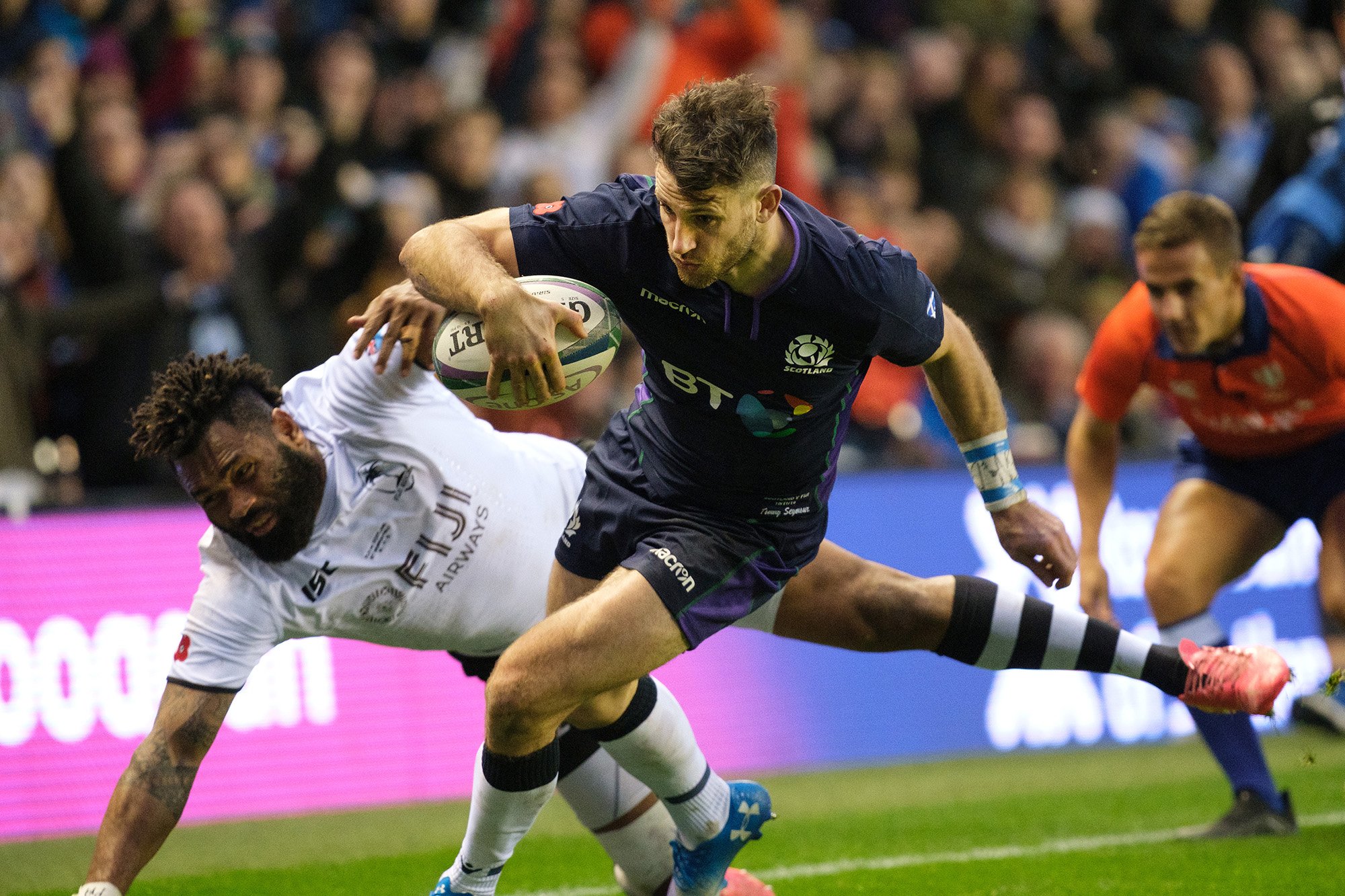
Tommy Seymour shrugs off a tackle to score for Scotland – X-T3 + XF200mmF2 + 1.4x – 1/1000 @ f2.8 ISO5000
Conclusion
I had high expectations for the X-T3 and XF200mmF2 for shooting team sport and I have to say they were exceeded. The Fujifilm X Series now has a camera and lens that can truly hold its own against the established brands at big international sporting events.
With a combined recommended retail price of just over £7000 (XT3 + battery grip + lens) it is not cheap by any stretch of the imagination but, to put it into perspective, a Canon 1DX MKII and 400mmF2.8 is over double that at £15,000. So for me, as a professional sports photographer, I am very happy with the new X-T3 and XF200mmF2 combination.
My next stop is Shanghai for the FIA World Endurance Championship and then it’s back to Murrayfield for the third Autumn International for Scotland v Argentina on Saturday 24th November.
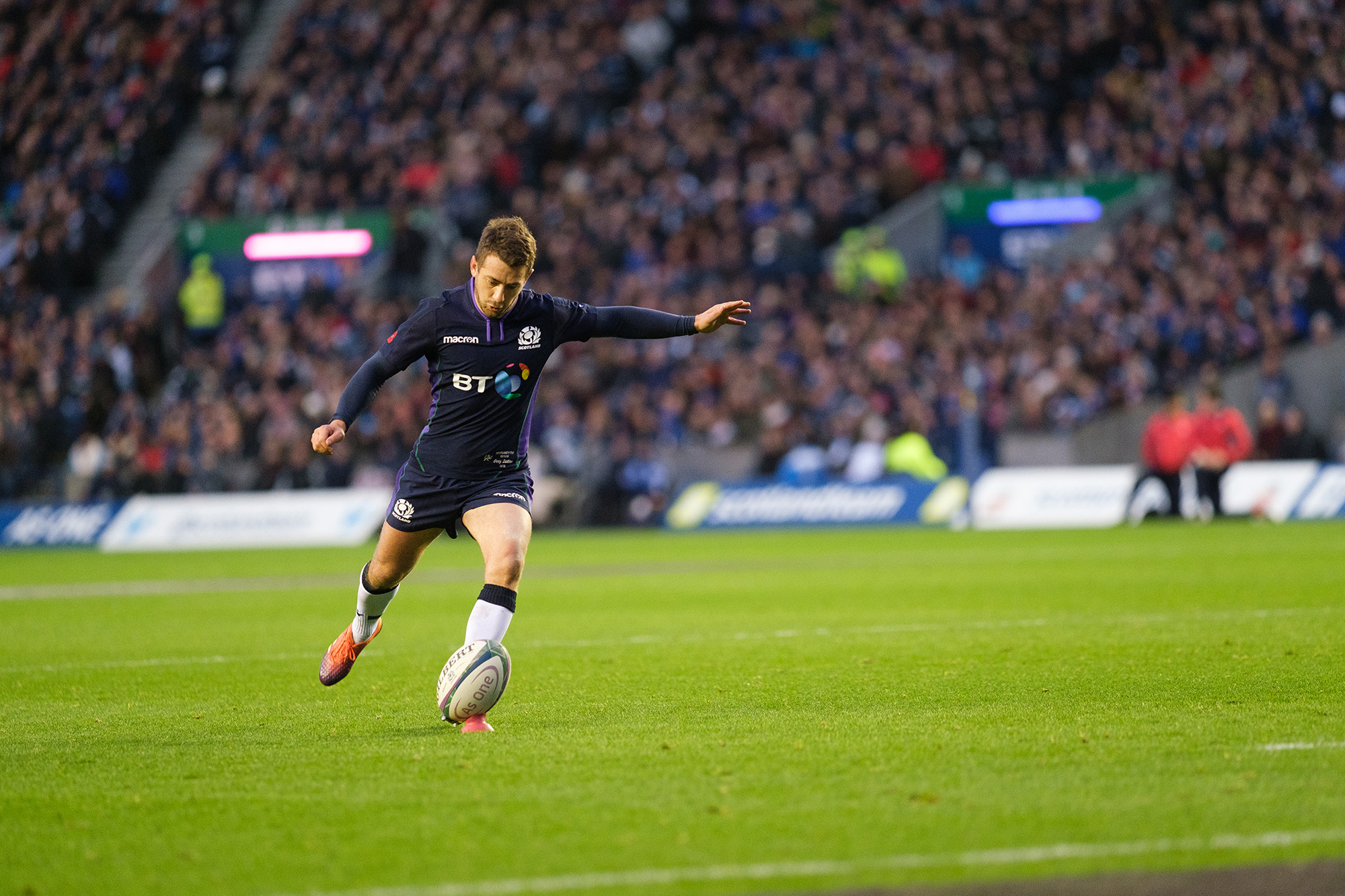
Autumn Tests 2018 Scotland v Fiji – Captain Greig Laidlaw kicks the conversion – X-T3 + XF200mmF2 – 1/1000 @ f2 ISO3200




